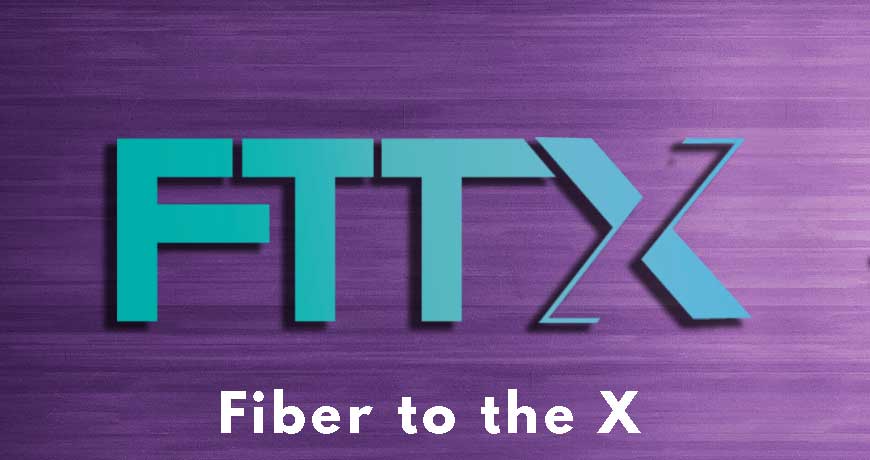Fiber to the x (FTTX) Leave a comment
Fiber to the x (FTTX) is a generic term for any broadband network architecture using optical fiber to provide all or part of the local loop used for last mile telecommunications. As fiber optic cables are able to carry much more data than copper cables, especially over long distances, copper telephone networks built in the 20th century are being replaced by fiber.
FTTX is a generalization for several configurations of fibre deployment, arranged into two groups: FTTP/FTTH/FTTB (Fiber laid all the way to the premises/home/building) and FTTC/N (fiber laid to the cabinet/node, with copper wires completing the connection).
The telecommunications industry differentiates between several distinct FTTX configurations. The terms in most widespread use today are:
FTTP (fiber-to-the-premises): This term is used either as a blanket term for both FTTH and FTTB, or where the fiber network includes both homes and small businesses.
FTTH (fiber-to-the-home): Fiber reaches the boundary of the living space, such as a box on the outside wall of a home. Passive optical networks and point-to-point Ethernet are architectures that deliver triple-play services over FTTH networks directly from an operator’s central office.[1][2]
FTTB (fiber-to-the-building, -business, or -basement): Fiber reaches the boundary of the building, such as the basement in a multi-dwelling unit, with the final connection to the individual living space being made via alternative means, similar to the curb or pole technologies.
FTTD (fiber-to-the-desktop): Fiber connection is installed from the main computer room to a terminal or fiber media converter near the user’s desk.
FTTO (fiber-to-the-office): Fiber connection is installed from the main computer room/core switch to a special mini-switch (called FTTO Switch) located at the user´s workstation or service points. This mini-switch provides Ethernet services to end user devices via standard twisted pair patch cords. The switches are located decentrally all over the building, but managed from one central point.
FTTE / FTTZ (fiber-to-the-telecom-enclosure or fiber-to-the-zone) is a form of structured cabling typically used in enterprise local area networks, where fiber is used to link the main computer equipment room to an enclosure close to the desk or workstation. FTTE and FTTZ are not considered part of the FTTX group of technologies, despite the similarity in name.[3]
FTTF (fiber-to-the-frontage) This is very similar to FTTB. In a fiber to the front yard scenario, each fiber node serves a single subscriber. This allows for multi-gigabit speeds using XG-fast technology. The fiber node may be reverse-powered by the subscriber modem.[4]
FTTdp (Fibre To The Distribution Point) This is very similar to FTTC / FTTN but is one-step close again moving the end of the fiber to within meters of the boundary of the customers premises in last junction possible junction box known as the “distribution point” this allows for near-gigabit speeds[5]
FTTN / FTTLA (fiber-to-the-node, -neighborhood, or -last-amplifier): Fiber is terminated in a street cabinet, possibly miles away from the customer premises, with the final connections being copper. FTTN is often an interim step toward full FTTH (fiber-to-the-home) and is typically used to deliver ‘advanced’ triple-play telecommunications services.
FTTC / FTTK (fiber-to-the-curb/kerb, -closet, or -cabinet): This is very similar to FTTN, but the street cabinet or pole is closer to the user’s premises, typically within 1,000 feet (300 m), within range for high-bandwidth copper technologies such as wired ethernet or IEEE 1901 power line networking and wireless Wi-Fi technology. FTTC is occasionally ambiguously called FTTP (fiber-to-the-pole), leading to confusion with the distinct fiber-to-the-premises system.
To promote consistency, especially when comparing FTTH penetration rates between countries, the three FTTH Councils of Europe, North America, and Asia-Pacific agreed upon definitions for FTTH and FTTB in 2006,[6] with an update in 2009,[7] 2011[8] and another in 2015.[9] The FTTH Councils do not have formal definitions for FTTC and FTTN.



